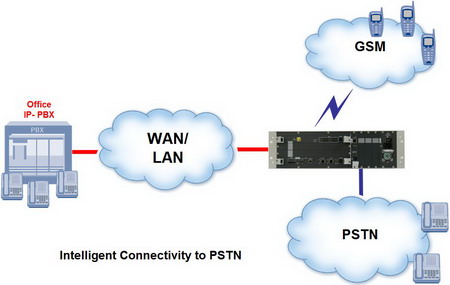The public switched telephone network (PSTN) is the aggregate of the world's circuit-switched telephone networks that are operated by national, regional, or local telephony operators, providing infrastructure and services for public telecommunication. The PSTN consists of telephone lines, fiber optic cables, microwave transmission links, cellular networks, communications satellites, and undersea telephone cables, all interconnected by switching centers, thus allowing most telephones to communicate with each other. Originally a network of fixed-line analog telephone systems, the PSTN is now almost entirely digital in its core network and includes mobile and other networks, as well as fixed telephones.
The technical operation of the PSTN adheres to the standards created by the ITU-T. These standards allow different networks in different countries to interconnect seamlessly. The E.163 and E.164 standards provide a single global address space for telephone numbers. The combination of the interconnected networks and the single numbering plan allow telephones around the world to dial each other.

